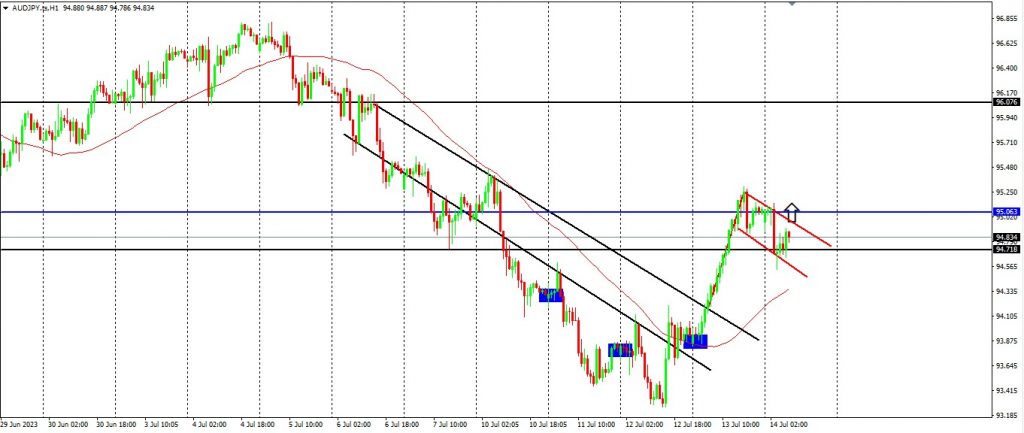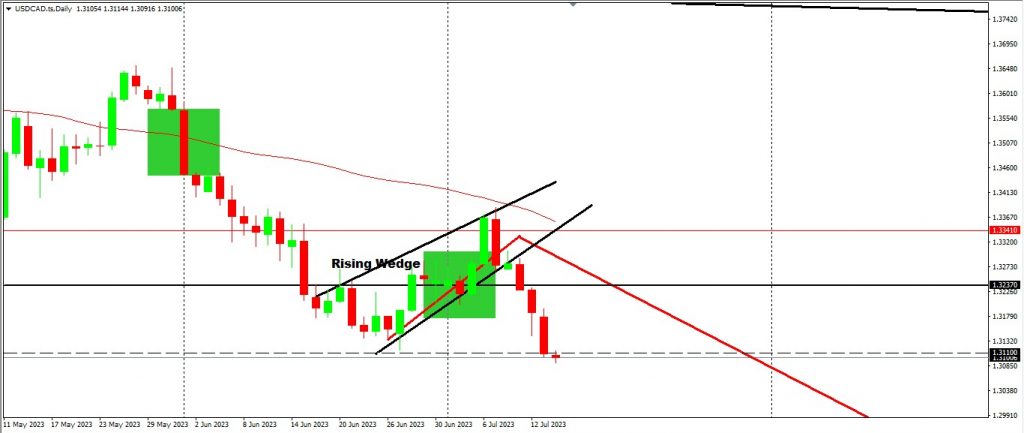In a dramatic turn of events, the US Dollar (USD) has experienced a significant decline. Falling below the crucial 100-point mark on the Dollar Index (DXY). This decline has caught the attention of global financial markets. This is raising concerns and prompting analysis of its implications for the US economy. This article delves into the factors driving the USD's decline and examines the potential consequences of this notable shift.
The AUDJPY Performance
Short-term movement to the upside. A bullish signal through a price pattern flag has been formed on the H1 timeframe. We wait for the buy signal above the resistance price point of 95.063 before entering the market. We also see 4-week highs on the AUD against the USD. Target suggested taking profits at a price point of 96.076.

The USDCAD Performance
As mentioned earlier in the week that we have broken through the price pattern, the price has moved towards the conservative entry zone at 1.31100. The Oil price has pushed up correlating positively with the movement of the CAD. The US dollar index held its recent decline to below 100 on Friday, sinking to its lowest levels in 15 months as signs that US inflation is on a downward trend raised hopes that the Federal Reserve is nearing the end of its current monetary policy tightening cycle.

The NZDJPY Performance
The NZD is back with strength, pushing up with a daily close above entry 2 at a price point of 88.173. Traders can identify the falling wedge price pattern on the daily frame signalling the upside. We wait for the price to break through the top side of the wedge before entering with a daily frame as well as the resistance at price point 88.951. Target remains the same as suggested to look at price point 91.647.

Read More: Traders Are Banking On The USD Weakness
Final Thoughts On Today’s Analysis
The recent drop below the 100-point mark on the DXY signifies a notable shift in the global currency landscape, with the US Dollar experiencing significant weakness. The divergence in monetary policies, inflation concerns, and the global economic recovery all contribute to the dollar's decline. While a weaker USD may have potential benefits for US exporters, it can also lead to higher import costs and impact global financial markets. It is crucial for traders, policymakers, and market participants to closely monitor the USD's trajectory. As well as its implications for various sectors of the economy.
